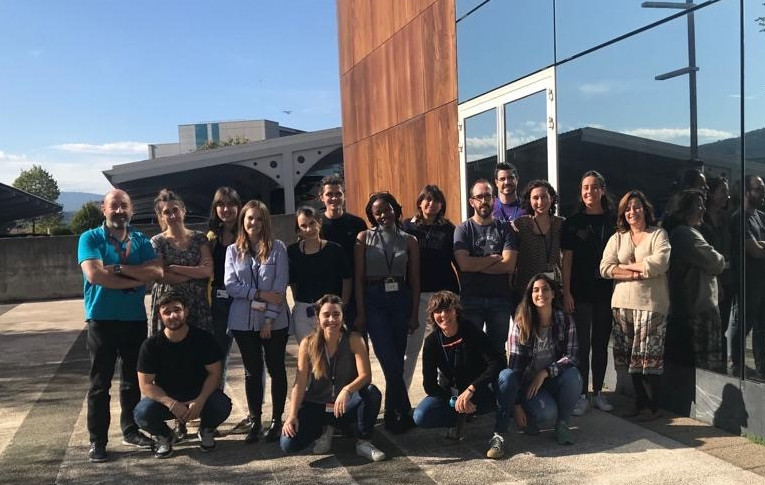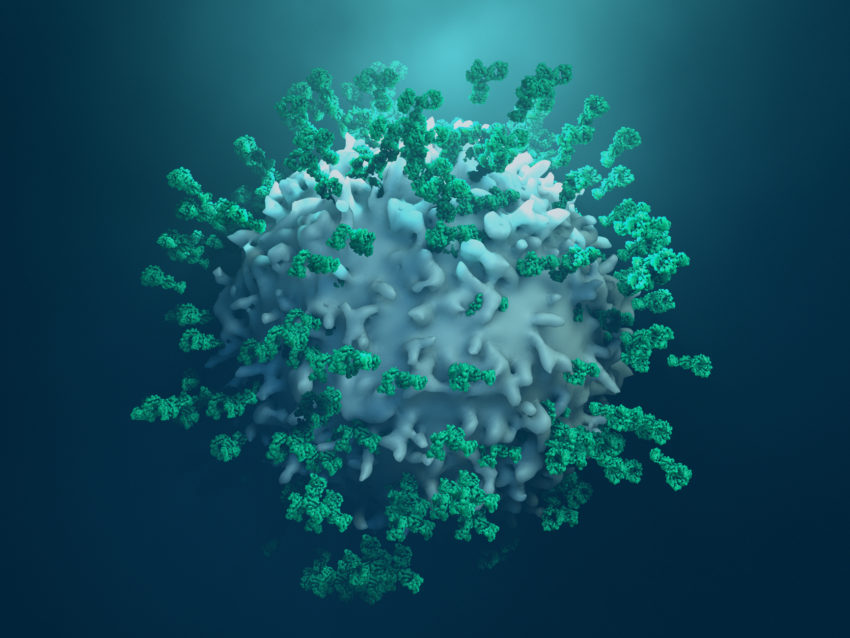
The Innovative Way Metabolic Pathways Panel is Being Used
Liver disease encompasses multiple conditions preventing the liver from functioning. These conditions are often associated with altered metabolic pathways including altered glucose and lipid metabolism. in 2019 NanoString® awarded a grant to Dr. Teresa Cardoso Delgado to study Non-Alcoholic Fatty Liver Disease (NAFLD).
The Liver Disease Lab (LDL) in Northern Spain is a scientifically prolific lab; collectively they published over 55 peer-reviewed articles in the last 5 years. The lab studies liver metabolism, physiology and disease. Specific areas of interest include post-translational modifications, mitochondrial activity, microRNAs and magnesium metabolism. The lab has developed new biological tools, preclinical animal models and new therapeutic approaches that have led to the acquisition of patents and the development of a robust translational research core facility.
Dr. Teresa Cardoso Delgado is a postdoctoral Spanish Association Against Cancer (AECC) Researcher in the Liver Disease Lab and one of the winners of the 2019 Metabolic Pathways Panel Grant. She won for her proposal “A time-course evaluation of the complex metabolic reprogramming and interplay of DNA damage and the immune response during NAFLD”. We recently sat down with Dr. Cardoso Delgado to catch up with her about the project and learn about her exciting research.

NS: Dr. Cardoso Delgado, tell us about the focus of research in your lab; how does your own research fall into the overarching questions being studied at The Liver Disease Lab?
TCD: I am a post-doctoral researcher in the Martínez-Chantar Lab (#MChantarLab) at the CIC bioGUNE Center in Bizkaia, Spain. Our lab focuses on the study of acute and chronic liver disease, which includes drug-induced liver injury (DILI), Non-Alcoholic Fatty Liver Disease (NAFLD), Liver Fibrosis, and Hepatocellular Carcinoma (HCC), the most common type of primary liver cancer.
We uncover the latest knowledge about liver diseases to find potential biomarkers and novel therapeutic targets, with the final aim to transfer our knowledge to biomedical and pharmaceutical companies. Currently, we are studying: a) post-translational modifications, mainly NEDDylation; b) Mitochondrial activity; c) microRNAS and d) magnesium metabolism. Within this framework, I have focused in the last several years on unraveling the complex metabolic reprogramming that occurs during the progression of NAFLD. With this grant project, we are understanding how these metabolic changes are associated with the concomitant immune and DNA damage responses.
An Interest in Complex Metabolic Pathway Networks
NS: What caught your interest in the field of hepatology?
TCD: Since my graduate studies, the study of the complex metabolic network has been an appealing topic. In 2004, I initiated my doctorate studies at the University of Coimbra, where I developed new methodologies to study glucose and lipid fluxes based on NMR techniques during hepatic insulin resistance states. The complexity of liver metabolomics, therefore, became my scope of research.
The transition to the study of NAFLD and HCC became clearer when I initiated my post-doctoral fellowship at The Liver Disease Lab at the CIC bioGUNE in 2013, a lab with vast expertise in the study of liver disease signaling, lipidomics, and methionine cycle deregulation.
NS: How did you hear about NanoString? How will your project benefit from the NanoString Metabolic Pathways Panel?
TCD: I received an email from NanoString advertising the grant program, after reading what we could do with nCounter technology, I thought this would be an interesting approach for understanding the metabolic alterations that occur during the progression of NAFLD.
As I have mentioned earlier, in our laboratory we are continuously seeking out novel pathways that play a role in the progression of NAFLD, on one hand, to increase our knowledge, and, on the other hand, to pass on our findings to biomedical and pharmaceutical companies who can use this information to develop drugs that improve the quality of life and reduce co-morbidities for NAFLD patients.
NS: NAFLD is fast reaching the levels of a global health crisis. What is the reason for such increased prevalence?
TCD: Nowadays, NAFLD is a very common disorder affecting around 25% of the worldwide population. It describes a group of conditions ranging from simple steatosis to Non-Alcoholic Steatohepatitis (NASH), the most harmful spectrum of NAFLD diseases.
The prevalence of NAFLD is closely associated with obesity, a worldwide epidemic. In 2016, more than 1.9 billion adults aged 18 years and older were overweight. Of these, over 650 million adults were obese.
Importantly, NAFLD is a risk factor for cardiovascular diseases, the leading cause of death worldwide, and for the development of liver cancer, the second deadliest type of cancer.
NS: What are the diagnostic hallmarks of NAFLD? How do they differ in simple steatosis and NASH?
TCD: Currently, a liver biopsy remains the gold standard for NAFLD diagnosis. When at least 5% of hepatocytes display steatosis, patients are diagnosed with NAFLD in an appropriate clinical context. When lobular inflammation and liver cell clarification/ballooning are also present, then the lesion can be qualified for NASH.
Because a liver biopsy is an invasive procedure, a number of noninvasive modalities to diagnose NASH and stage liver fibrosis are being developed, including predictive models and serum biomarkers such as those detected in the Enhanced Liver Fibrosis (ELF) blood test. Other tests are based on radiological techniques, such as transient elastography (TE) or magnetic resonance elastography (MRE).
Why is the Role of Reactive Oxygen Species Critical in Liver Disease?
NS: How do Reactive Oxygen Species (ROS) damage the liver cells?
TCD: NAFLD is characterized by mitochondrial dysfunction that eventually leads to the production of ROS. ROS can damage lipids, DNA, RNA, and proteins.
During the process of liver damage, ROS causes hepatocyte dysfunction and apoptosis, infiltration of Kupffer cells into the liver, and the activation of hepatic stellate cells.
NS: The oxidative stress caused by ROS induces DNA damage and inflammation. Do you see an interplay between metabolic reprogramming, DNA damage, and the immune response, and is there a druggable target to be found?
TCD: So far, we have observed that metabolic reprogramming occurs in different stages of NAFLD progression; this is clearly observed by the clustering of the different NAFLD mouse models corresponding to different dietary interventions.
We know from previous work that DNA damage reprogramming occurs mainly at later stages of disease progression, characterized by advanced inflammation and fibrosis.
We now need to establish a correlation with the associated immune response in order to find a common and druggable therapeutic target. For instance, we know that several drugs targeting metabolism, for example, amino acid metabolism, have been developed for cancer therapy and could be important in the clinical management of NAFLD.
NS: What is the role of fibrotic tissue in the progression to hepatic cancer?
TCD: The presence of advanced fibrosis is the most important predictor of liver-related mortality and liver cancer in NAFLD patients and that is why the American Association for the Study of Liver Diseases (AASLD) guidance also suggests that pharmacotherapies aimed primarily at improving liver disease should be limited to patients with NASH and fibrosis.
NS: What is the biggest challenge you see ahead for your research?
TCD: The biggest challenge will be to integrate all the NanoString data with the metabolomics data we have from the same samples. Our purpose will be to find a suitable candidate or list of candidates that can be used either as biomarkers or therapeutic targets for NAFLD. Then, we will have to test if modulation of this target impacts the progression of NAFLD in mouse models. Finally, and maybe the most difficult task is to translate these findings to patients.
How is NanoString Technology Helping?
NS: How does NanoString nCounter technology add value to your research?
TCD: NanoString nCounter technology provides an easy and fast way to understand the metabolic reprogramming that occurs in NAFLD, giving us information on the presence and relative abundance of different immune cell types.
Also, the nSolver data analysis software makes it easy for bench scientists with little to no background in bioinformatics to analyze their data and put together publication-ready figures.
NS: In this series of interviews we want to get to know our grant winners beyond the science, which is why we ask them to share a fun, weird, or quirky fact about their lab and/or lab mates. Every lab has a story to tell. What’s yours?
TCD: In our laboratory, we work with special equipment for the analysis of oxygen consumption, an instrument called the Seahorse Analyzer. In one of our weekly lab meetings, we introduced a new technician. We were talking about the experiments we had planned in the animal facility, Seahorse analysis among them. About one week later, the technician came back and asked what kind of experiments we were planning to do on seahorses, the animals!
Did you know? — besides the Metabolic Pathways Panel, NanoString has a dedicated gene expression panel for studying fibrotic diseases like NASH. The nCounter Fibrosis Panel is available for human and mouse and covers 770 genes across 51 annotated pathways involved in the four stages of Fibrosis: Initiation, Inflammation, Proliferation, and Modification.



